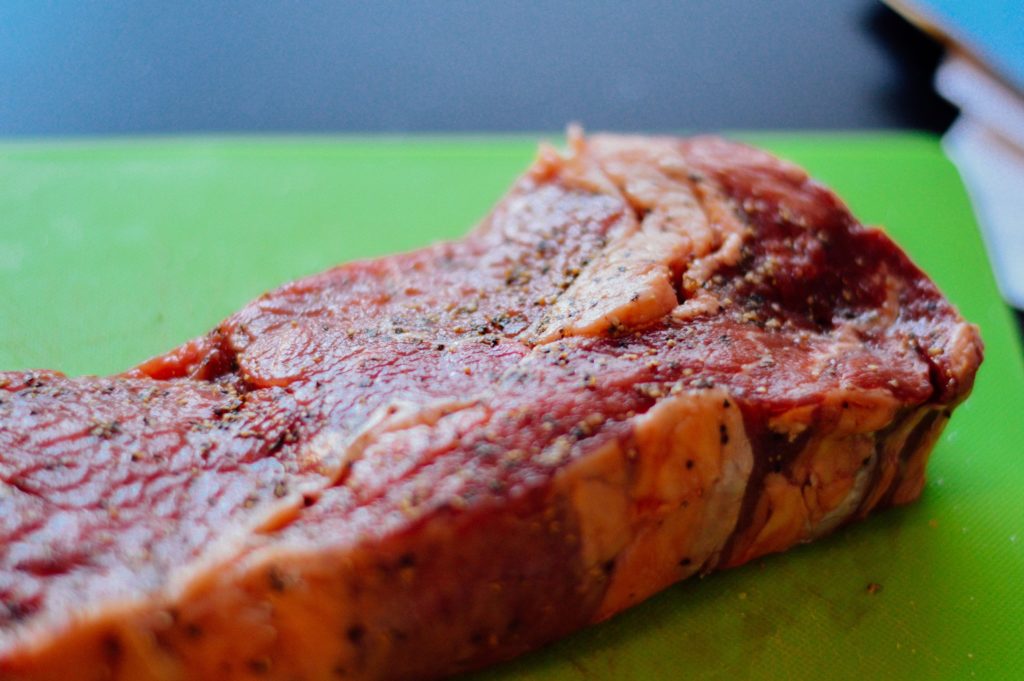Before I knew any better, I used to shy away from cooking (and even touching) raw meat because I was always afraid of touching that pink juice that I always presumed was blood. I kept this assumption up until I took a food science class in college, where pretty much everything I thought I knew about meat and poultry was proved wrong. It’s all good though – there’s no reason to be afraid of handling meat, because that juice isn’t blood.

GIF courtesy of giphy.com
Turns out, that red juice is actually water mixed with a little pigment called myoglobin. It’s the same coloring pigment that makes the muscle on your steak pink, and since beef typically has quite a bit of water in its muscle, some of it pools off and mixes with the myoglobin.
The pigment carries oxygen to different muscles, so the more an animal uses a muscle, the more red it will appear. Myoglobin is actually what makes the difference between white and dark meat – the deeper the color, the more that muscle is used. That’s why chicken wings and thighs are classified as ‘dark’ meat, since birds have to use those muscles to fly and move around. This is also why your meat changes color as you grill it, as the myoglobin turns a dull grey-brown once it’s cooked.

Photo by Joyce Zhan
Too much science for you? The main thing to remember is the juice isn’t blood at all, but rather a mere pigment that colors the meat. Hopefully that makes handling your raw steaks a little less unnerving – now go on and get cookin’.


